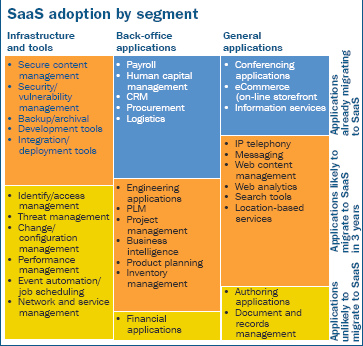 Quick news from the press conference at SAPPHIRE 2006: Shai Agassi has just announced the all-cash acquistion of Frictionless Commerce, a leading Supplier Relationship Management (SRM) software provider. As a result of the acquistion, On-Demand SRM will be the second SaaS offering by SAP, following the recent introduction of On-Demand CRM. Second, but certainly not last,
Quick news from the press conference at SAPPHIRE 2006: Shai Agassi has just announced the all-cash acquistion of Frictionless Commerce, a leading Supplier Relationship Management (SRM) software provider. As a result of the acquistion, On-Demand SRM will be the second SaaS offering by SAP, following the recent introduction of On-Demand CRM. Second, but certainly not last,  as Leo Apotheker clarified during the Press Conference, over time all SAP’s offering will be made available in the “hybrid” model.
as Leo Apotheker clarified during the Press Conference, over time all SAP’s offering will be made available in the “hybrid” model.
Update: See initial analysis by AMR Research.
Related posts:
- SAP acquires Frictionless Commerce
- SAP Continues to Build out SRM Ecosystem
- Don’t Count Out Frictionless Commerce Yet
- Initial Thoughts on the SAP / Frictionless Deal
- SAP AG buys Frictionless Commerce Inc.
- Software by any other name, such as ‘process outsourcing’
- SAP SRM finally has Sourcing & Contracts
- SAP Deal Done




Recent Comments